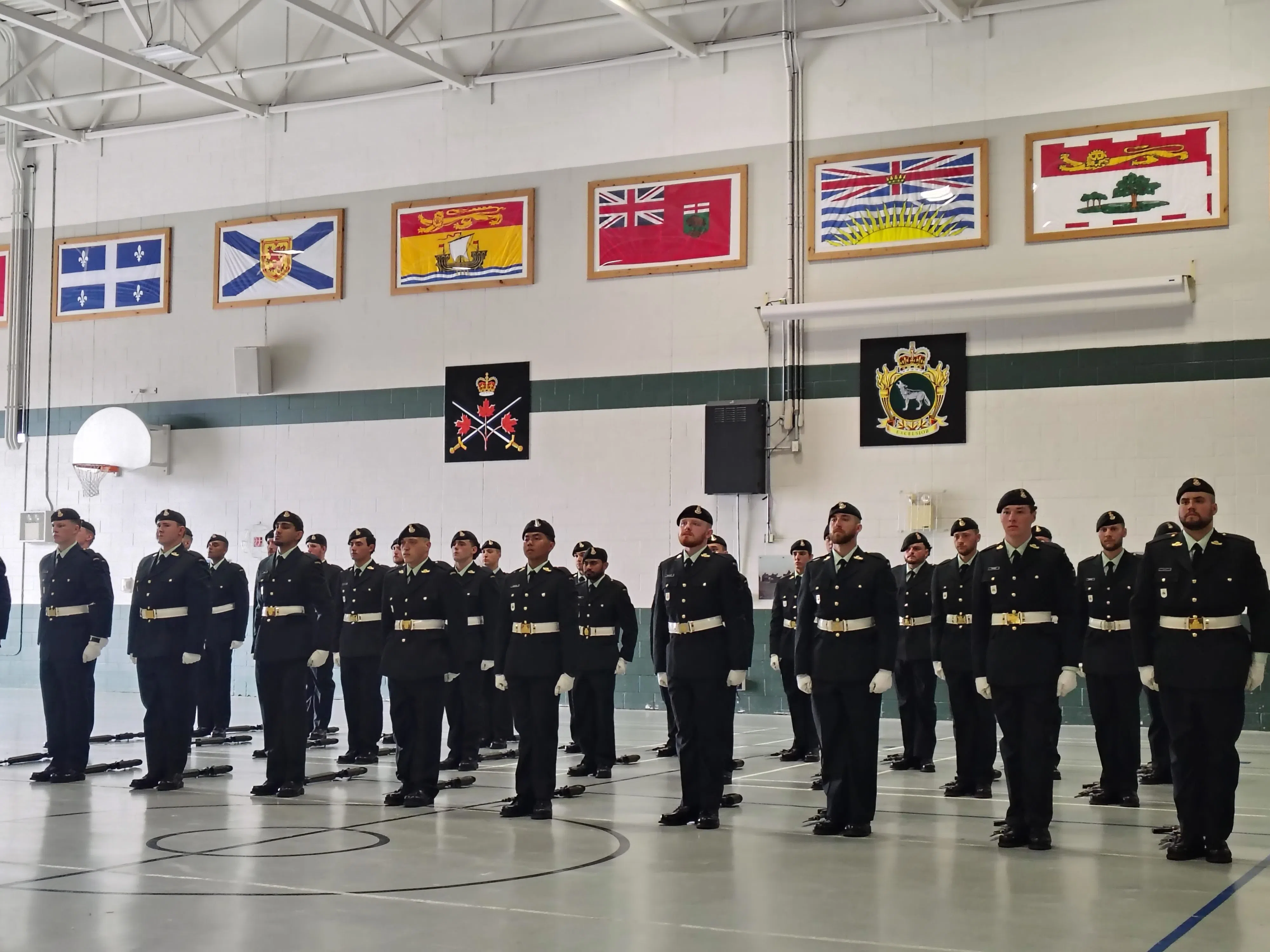The 4th Canadian Division Training Centre in Meaford recently celebrated its latest group of infantry soldiers to graduate.
Family and friends gathered on June 5th, for a Cap and Badge Ceremony marking the next step in the careers of 35 soldiers who have completed their rank qualification infantry private course and are now qualified members of the Canadian Armed Forces (CAF) within their trade.
“Today is the day that they become trained members of the Canadian Armed Forces,” says Major Simon Kassissia, Officer Commanding, Bravo Company, 4th Canadian Division Training Centre. “It means a lot,” he says and notes, “This is the culmination of a lot of effort and a lot of hard work for them.”
Kassissia explains, “From the point that they arrive here on day one— to this point is a very long and difficult journey for them.” He adds, “A lot is demanded of them in terms of the amount that they need to learn, but also the amount that their behaviour and competency needs to change in order to be an effective member of the Canadian Armed Forces.”
Kassissia says the 13 week qualification training comes after eight weeks of basic training in Saint-Jean-Sur-Richelieu where all members of the Canadian Armed Forces learn the basics like how to shoot and march.
“Basic training gives them the raw material to succeed, but they’re constantly learning and working hard while they’re here,” says Kassissia.
The Walsh family from Kingston traveled to Meaford for the ceremony. Father and Canadian veteran Brin Walsh, who remembers his own graduation in 2004, says, “My son Brayden, he’s graduating, he’s going to Petawawa. He’s always wanted to do it, he’s been looking at this for his career path for his whole life, and I was military before too. It’s nice to see him get through this. You can tell he’s proud.”
At the Meaford training centre during their 13 week course, they learned weapons handling specific to the infantry; rifles, light machine guns, medium machine guns, grenade launchers, rocket launchers, light and medium hand grenades, command detonated mines, individual close quarter combat fighting with bayonets and hand to hand. “They learn how to apply those skills as a team,” says Kassissia.
These soldiers will go on to serve in any of Canada’s three infantry regiments: Princess Patricia’s Canadian Light Infantry in Manitoba and Alberta, The Royal Canadian Regiment in New Brunswick and Ontario, or le Vingt-deuxième (The Royal Canadian 22nd Regiment nicknamed the Van Doos) in Quebec.
Kassissia says while life as a soldier is still difficult, the qualification gives them more autonomy. “They get to start building a bit more of a normal life. They’re not in the training system so to speak, anymore so they can begin their career as a trained member of the Canadian armed forces which is a great day for them and their families I think.”
Kassissia says, “The majority of these soldiers are likely to find themselves overseas at some point within the next two years. The reason for that is we have a very busy operational tempo in the Canadian Army at this time.”
These soldiers could be deployed on Operation Reassurance in Latvia where Canada leads the NATO brigade. They could also be deployed on Operation Unifier, now located in the United Kingdom providing support and training to Ukrainian soldiers. That operation was located in Ukraine before Russia invaded in 2022. These soldiers could be deployed domestically to assist with wildfires or floods (Operation Lentus). There are also numerous other smaller scale deployments for infantry soldiers around the world.
The Canadian Armed Forces has been changing the way it recruits members. It’s now accepting applicants with medical conditions that can include asthma, anxiety and ADHD among others. It’s also now accepting permanent residents rather than Canadian citizens only.
Also new is a probationary training period for applicants while they wait for security clearance and other administrative tasks to be completed. During that time they can start basic qualification training.
Meanwhile, what used to be an aptitude test is now a scored employment application form that looks at education, experience and other achievements. The military is also working on fine-tuning its digital application process
Overall, the Canadian Armed Forces needs about 14,000 more members. A February announcement from the Department of National Defence said, “The CAF is committed to achieving its goal of enrolling 6,496 regular force members for the fiscal year 2024-2025.”
Ideal numbers from the Department of National Defence say the regular force should be 71,500 members strong and there should be 30,000 primary reserve members.
There is an upcoming opportunity to see first hand what military infantry training is like at the 4th Canadian Division Training Centre. An open house is set to take place July 19th.




